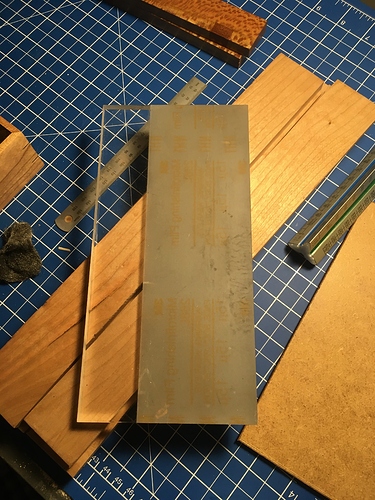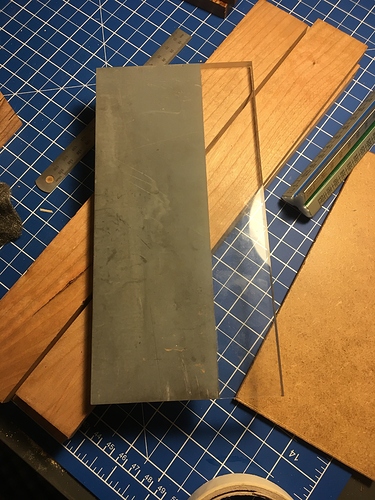I had originally planned on flattening my stones with this piece of acrylic and a sheet of self adhesive diamond sheet or 100 micron film. I bought a trend diamond stone so I decided to stick a sheet of 1200 grit lapping film on one side and 4500 grit on the other. This makes a pretty good portable set up. I used it today for a sharpening demo and it works very well. The discrepancy from flat is approximately 1/20 of a mm. I had to edit this because it may have actually shown up in the resulting edge. When honing on cardboard the corners of the chisel dug into the cardboard hone. It had never happened before. I think we may have made a very fractionally concave edge. The overall convexity across 7cm of acrylic peaked at 1/20 mm. The blade was 12 mm,I think, so someone smarter than me can work out the exact concavity we produced. Approximately 1/7 th of the 1/20 mm? That seems an impossibly small discrepancy, maybe the chisel tore the cardboard because of the cold and damp, being outside. I will still definitely be using this acrylic when I travel. All my blades are very well cared for, an occasional sharpening on the acrylic won’t cause me problems. Can’t say the same for the faithfull diamond stone, efforts to flatten the back of a chisel with the faithfull diamond plate were not successful. Instead of ensuring you get a sharp edge, backing off a blade on the faithfull diamond plate will ensure you never get a decent edge because it is nowhere near flat. It will refresh an edge on a turning tool or, establish primary bevels, etc, but definitely should never go near bench plane backs or the Narex chisels. The glass plate is the best option at the space for backing off, currently.
The acrylic is worth a look, it’s a cheap, decent option. Choose the acrylic though, eyeball the edge and use a feeler gauge and a straight edge if you are serious about your tools.
Portable sharpening
2 Likes


